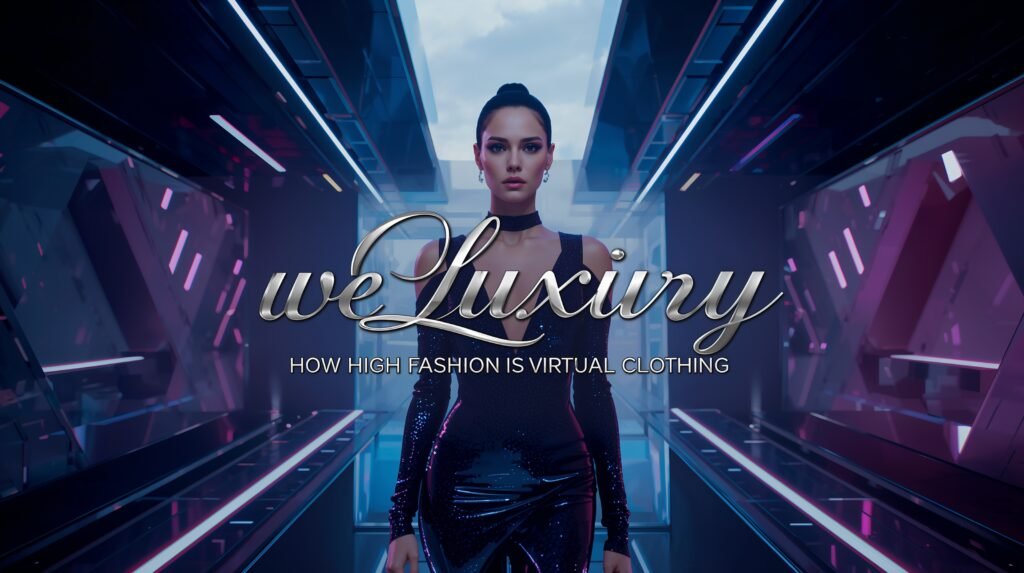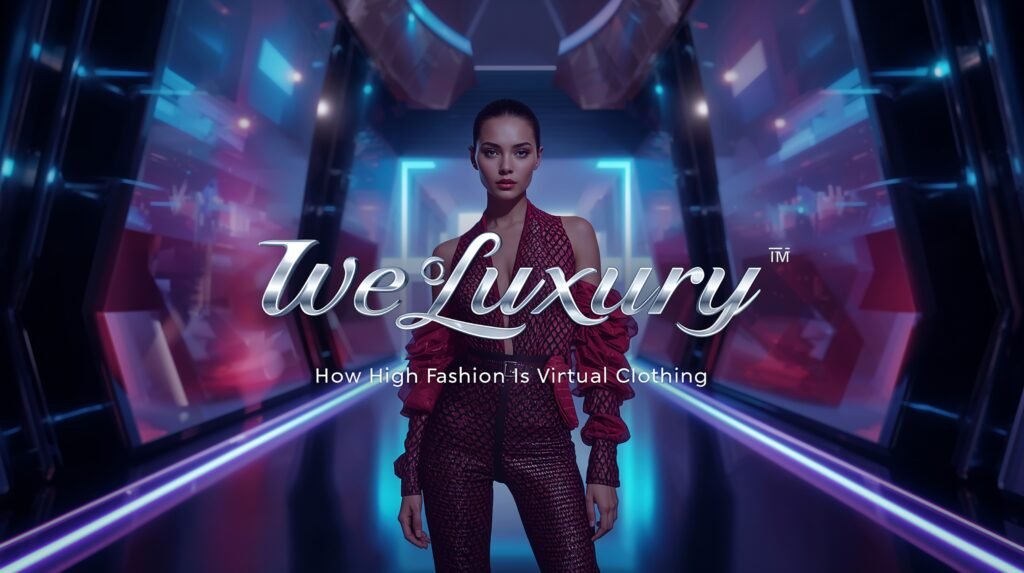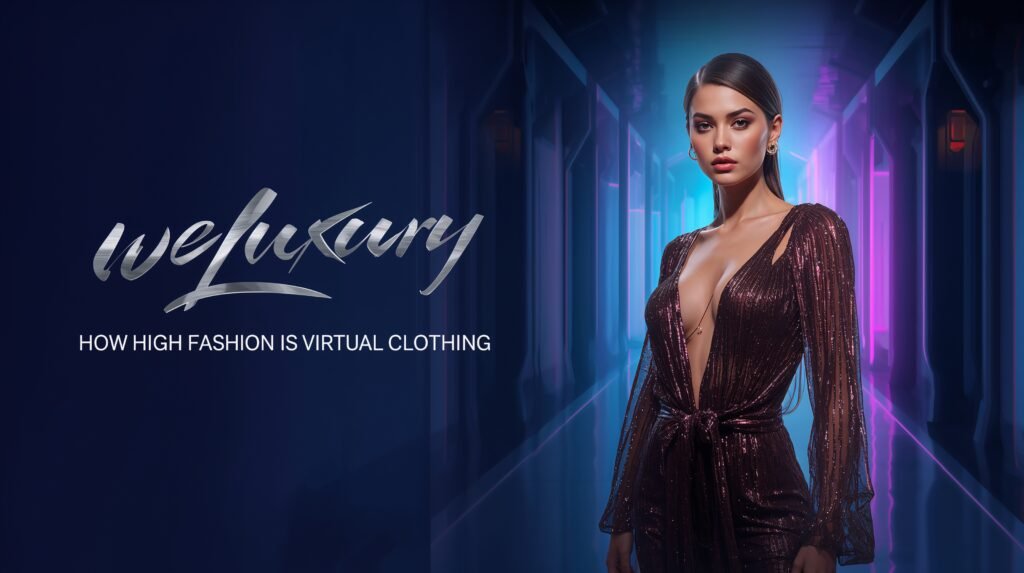The rise of virtual clothing in the high fashion industry marks a groundbreaking shift in how luxury brands connect with consumers. As digital technologies advance, high-end labels are exploring innovative ways to craft digital fashion that allows individuals to showcase their personal style in online environments.
These digital garments provide consumers with the ability to curate their virtual identities, merging them with real-world style as more people spend time in virtual spaces such as gaming platforms, social hubs, and digital metaverse environments. In this context, luxury in the metaverse is no longer a futuristic concept—it’s a rapidly expanding industry.

The Rise of Virtual Clothing in High Fashion
One of the most compelling benefits of virtual clothing is its potential for sustainable clothing practices. Traditional fashion production contributes to substantial waste, from excess inventory to environmental degradation. By adopting digital fashion, brands reduce manufacturing overhead and minimize ecological impact, allowing consumers to enjoy luxury without a carbon footprint.
Additionally, virtual clothing creates entirely new revenue streams. Purchasing digital garments for avatars or social media personas expands the market far beyond physical product sales. This not only increases accessibility to luxury fashion but also democratizes high-end style, enabling a broader audience to experience the thrill of designer labels, regardless of location.
The creative freedom offered by digital design is another major draw. Designers are no longer limited by physical fabrics or production constraints, enabling imaginative, boundary-pushing designs that captivate both virtual and real-world audiences. This fusion of digital fashion and high technology is redefining modern luxury experiences.
High Fashion Brands Leading the Virtual Clothing Movement
Luxury brands are at the forefront of the metaverse fashion revolution, leveraging virtual clothing to connect with consumers in immersive ways. Notable examples include Gucci and Balenciaga, whose innovative projects are redefining online fashion engagement.
Gucci has introduced digital-only collections that let users dress avatars in meticulously designed pieces replicating the look and feel of their physical lines. Beyond aesthetics, these digital garments are more affordable than traditional luxury pieces, allowing tech-savvy audiences to express style without the financial burden of physical luxury goods. Learn more about Gucci’s digital ventures in this Forbes report.

Balenciaga has explored partnerships with video games and virtual environments, offering consumers an interactive fashion experience that blends gaming and luxury. Exclusive digital collectibles also provide a new way to showcase status in virtual communities, an increasingly valuable aspect of the digital metaverse.
Both brands are also offering customizable digital clothing, enabling users to personalize virtual outfits. This increased engagement fosters a deeper connection with the brand and demonstrates how high fashion is bridging the gap between physical and virtual luxury.
The Role of Virtual Try-Ons in Digital Fashion
A major breakthrough supporting virtual fashion is virtual try-on technology, powered by augmented reality (AR) and artificial intelligence (AI). This innovation allows consumers to visualize how digital garments fit and look on their avatars, simulating the experience of trying on real clothes.
Virtual try-ons improve customer satisfaction by helping shoppers make informed choices, reducing uncertainty common in online shopping. They also significantly decrease return rates—studies indicate that around 30% of online clothing purchases are returned due to sizing or fit issues. By enabling realistic digital fittings, brands can enhance operational efficiency while maintaining consumer trust.
Luxury fashion brands such as Prada are already implementing this technology, allowing customers to explore collections in immersive digital spaces. By incorporating virtual try-ons, brands not only embrace digital try-ons but also elevate the overall shopping journey, blending technology and luxury seamlessly.
Why Virtual Clothing is the Future of Luxury Fashion
The rise of virtual clothing signifies a transformative moment for the luxury fashion industry. Consumers are increasingly valuing virtual identity, where digital appearances hold equal importance to physical ones. Brands like Gucci, Balenciaga, and platforms such as DressX are driving this evolution, investing in digital designs and marketing strategies tailored for online fashion ecosystems.
Virtual clothing enables designers to explore limitless creative possibilities. Freed from fabric and production constraints, they can produce imaginative, shareable designs that resonate globally. Additionally, the sustainable benefits of digital fashion are becoming more critical. By reducing environmental impact, brands demonstrate their commitment to eco-conscious luxury, which increasingly influences consumer choices.

Inclusivity is another vital advantage. Digital fashion allows a wider representation of styles and identities, offering consumers opportunities to experiment with looks that may not be feasible in the physical world. As luxury in the metaverse continues to mature, this intersection of creativity, sustainability, and inclusiveness ensures virtual clothing will remain a core pillar of high fashion in the digital age.
Conclusion
Luxury in the metaverse is redefining how high fashion interacts with consumers, offering sustainable, creative, and accessible alternatives to traditional garments. With brands like Gucci, Balenciaga, and DressX leading the charge, virtual clothing is reshaping both the economic and aesthetic landscape of luxury fashion.
As technology advances, innovations such as virtual try-ons, immersive AR experiences, and customizable digital collections will continue to expand the reach of luxury fashion. For consumers and designers alike, the metaverse offers a new frontier for expression, creativity, and environmental responsibility—a true revolution in how we define style.
For more insights on the future of high-end travel and lifestyle, visit our luxury cruising experiences page.
